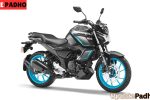The Indian two-wheeler market is undergoing a massive transformation, with electric scooters becoming increasingly popular among urban commuters. Brands like TVS, Bajaj, and Ola Electric have surged ahead, offering practical, affordable, and widely available EVs. Yet, in this fast-moving race, one name has stumbled—Honda Activa e. Once hailed as the electric successor to India’s most beloved scooter, the Activa e has now been discontinued, leaving behind important lessons for both Honda and the industry.
⚡ The Launch That Promised Too Much
Honda Motorcycle & Scooter India (HMSI) launched the Activa e in January 2025, alongside the QC1, its more affordable sibling. Priced at around ₹1.17 lakh, the Activa e was positioned as a premium EV, offering:
- A range of 102 km per charge
- Top speed of 80 km/h
- Advanced features like Honda RoadSync Duo app connectivity, smart key access, and swappable battery technology
On paper, it looked like a winner. The Activa brand already dominated the petrol scooter market, and Honda hoped to replicate that success in the EV space.
🚨 The Reality Check
Unfortunately, reality didn’t match expectations. Between February and July 2025, Honda produced 11,168 units of the Activa e and QC1 combined. But only 5,201 units were sold, leaving nearly half the inventory unsold.
The Activa e was hit hardest:
- Just 740 units sold in six months, compared to over 4,200 QC1 units
- Limited availability in only three cities—Bengaluru, Mumbai, and Delhi
- Dependence on Honda’s battery swapping stations, with no option for home charging
This restricted ecosystem frustrated buyers, especially when competitors offered simpler charging solutions.
🏍️ Why the QC1 Outsold the Activa e
The QC1, priced at ₹90,000, came with a portable, home-chargeable battery. This convenience, combined with affordability, made it far more appealing to customers. In contrast, the Activa e’s reliance on swapping stations felt restrictive, especially in a country where charging infrastructure is still developing.
🌍 Market Competition
Honda’s timing also worked against it. By 2025, TVS iQube, Bajaj Chetak, and Ola S1 had already established strong footholds. These scooters offered competitive pricing, reliable performance, and widespread availability. Against such rivals, the Activa e struggled to justify its premium positioning.
📉 Production Halt
By August 2025, Honda officially stopped manufacturing the Activa e and QC1, citing poor sales and unsold inventory. The move came just six months after entering the EV market, highlighting how quickly fortunes can change in this fast-paced industry.
🔑 Lessons Learned
The failure of the Activa e offers several lessons:
- Infrastructure matters: Battery swapping is innovative, but without a wide network, it becomes a liability.
- Pricing must match value: At ₹1.17 lakh, the Activa e was too expensive compared to rivals offering similar or better convenience.
- Brand strength isn’t enough: Even the mighty Activa name couldn’t guarantee success without practical features and accessibility.
🚀 What’s Next for Honda?
Honda has not abandoned its EV ambitions. The company is expected to regroup and possibly relaunch with more affordable, home-chargeable models. The QC1’s relative success shows that Indian buyers prioritize convenience and affordability over premium branding.
✨ Final Thoughts
The Honda Activa e was supposed to be a game-changer, but instead, it became a cautionary tale. Its discontinuation underscores the challenges of entering India’s EV market without a robust ecosystem and competitive pricing. For Honda, this is not the end of the road—it’s a reminder that in India, EV success depends on practicality, affordability, and accessibility.



